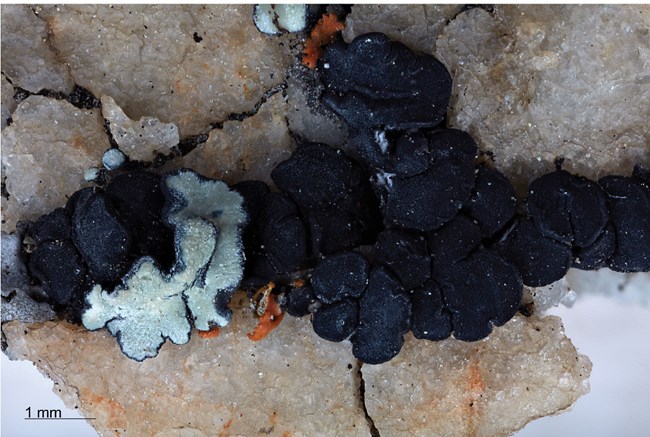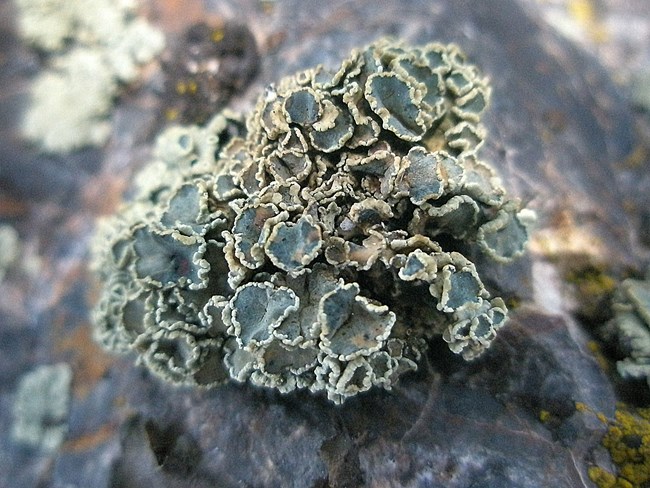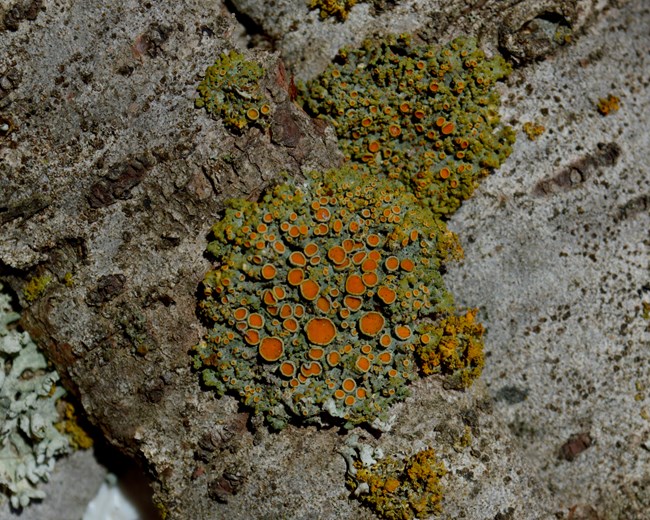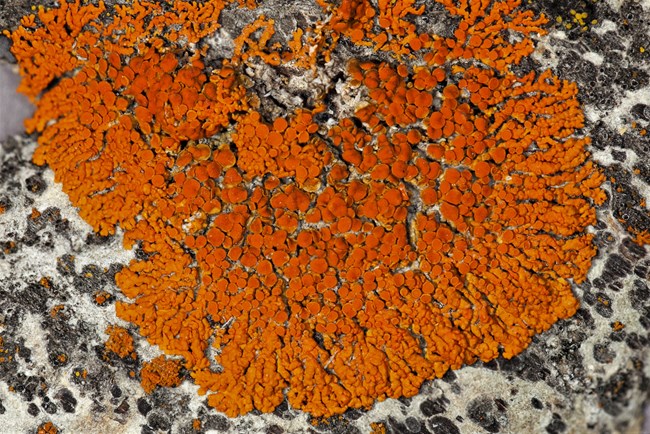Part of a series of articles titled The Midden - Great Basin National Park: Vol. 19, No. 1, Summer 2019.
Article
Lichen Diversity in Great Basin National Park
This article was originally published in The Midden – Great Basin National Park: Vol. 19, No. 1, Summer 2019.

Photo by Steve Leavitt
When a lichen that had been known only from Antarctica and the High Arctic, Lecidea andersonii, turned up in collections made in Great Basin National Park during a BioBlitz in 2017, it became clear how little is known about lichen diversity and distributions in the Great Basin.
Lecidea andersonii is just one of the 233 lichens that were recently documented in the first checklist of the lichens of Great Basin National Park. This checklist marks an important landmark in characterizing lichen diversity in the Park.
While finding unusual lichen specimens is not uncommon when examining field collections of these underexplored lifeforms in the lab, the overall lichen diversity in Great Basin National Park is particularly striking. Surveys near Wheeler Peak revealed a 4:1 ratio of lichens to vascular plants; and diverse lichen communities are found throughout the Park’s diverse ecosystems.

Photo by Steve Leavitt
In other cases, extreme differences in lichen communities are observed. The alpine lichen communities on Mount Washington (3553 m.a.s.l.) and Wheeler Peak (3982 m.a.s.l.) are noticeably distinct in terms of species composition and diversity, largely due to differences in rock substrates. In fact, the Prospect Mountain Quartzite on Wheeler Peak harbors at least 38 rock-dwelling lichens in comparison to the eight documented lichens occurring on the Pole Canyon Limestone comprising the summit of Mt. Washington.
The majority of the lichens in the Park occur on rock surfaces or live inside rock with only fruiting structures appearing on the rock surfaces, e.g. endolithic lichens. Diversity of these endolithic lichens has been particularly fascinating.

Photo by Steve Leavitt
A recently described limestone specialist, Tintick’s cobblestone lichen (Acarospora tintickiana), was found occurring commonly in South Fork of Big Wash. Dozens of other uncommon or unexpected rock-dwelling lichens are now known to occur in the Park. This pattern of diverse, unexpected lichen communities is repeated for soil-dwelling lichens, although to a lesser degree.
There is a somewhat surprising lack of epiphytic (growing on another plant but not parasitic) lichens within the Park as a whole. While a number of these were found on trees in relatively moist riparian zones, for the most part species of Xanthomendoza or Melanohalea are the predominant epiphytes. Fruticose (shrubby) lichens, such as beard lichens (Usnea spp.) and wolf lichen (Letharia spp.) are only rarely encountered. Horse hair lichens (Bryoria spp.) occur in nearby mountain ranges but have yet to be documented in the Park. However, the arid climate of this Park is probably a major factor in suppressing epiphyte development.

Photo by Jason Hollinger
Despite the rich, diverse lichen communities documented for Great Basin National Park, a significant proportion of lichen diversity is surely yet to be discovered. The current lichen checklist for Great Basin National Park provides an important baseline for future studies and will be critical for ongoing and long-term assessments of the ecological health in the Great Basin region of western North America.
Last updated: February 15, 2024
